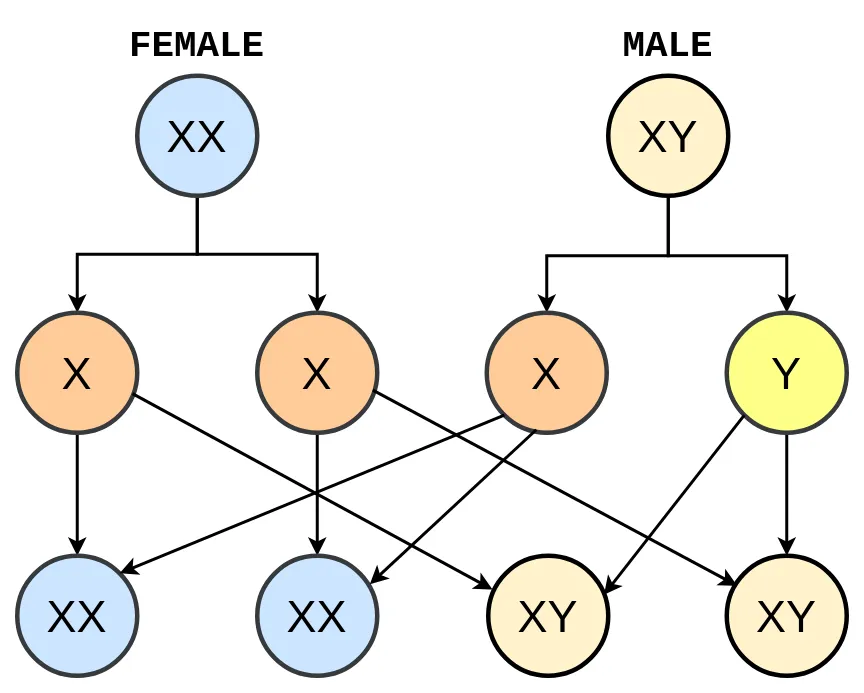
The Disappearing Y Chromosome: Insights from the Amami Spiny Rat
Sex chromosomes are critical in determining the gender of mammals, and their evolution has been a significant focus of scientific inquiry for decades. Interestingly, not all mammals adhere to the traditional XY chromosome system. Recent scientific research has uncovered a fascinating yet concerning phenomenon: the gradual loss of the Y chromosome in males. The Amami spiny rat, for instance, deviates from this norm. This unique rodent lacks the conventional Y chromosome and the crucial sex-determining gene, SRY.
This article explores pioneering research that reveals how these rats determine sex without the Y chromosome and SRY, offering fresh insights into the evolution of sex chromosomes.
Research Paper: Turnover of mammal sex chromosomes in the Sry-deficient Amami spiny rat is due to male-specific upregulation of Sox9

What Are Sex Chromosomes?
In most mammals, sex is determined by two chromosomes: X and Y. Typically, females have two X chromosomes (XX), while males have one X and one Y chromosome (XY). The Y chromosome carries a crucial gene called SRY, which triggers the development of male characteristics. However, the Y chromosome and SRY gene are completely absent in some exceptional species, like the Amami spiny rat.
The Y chromosome, essential for male fertility and sexual development, is a defining feature of biological males. However, evidence suggests that this chromosome is slowly shrinking, raising the possibility of its eventual disappearance.
The Amami Spiny Rat: A Unique Case

The Amami spiny rat (Tokudaia osimensis) is native to a small island in Japan. What’s remarkable about this species is that both males and females have only one X chromosome (XO/XO), and there is no Y chromosome. This raises a crucial question: how do these rats determine sex without the SRY gene?
Discovery of a New Sex-Determining Mechanism
After three decades of research, scientists have discovered a new mechanism these rats use to determine sex. The key lies in a small piece of DNA near a gene called Sox9, which is crucial for male development. In the Amami spiny rat, a specific region of DNA, known as an enhancer, has been duplicated in males. This duplicated enhancer boosts the activity of the Sox9 gene, leading to the development of male characteristics, even in the absence of the SRY gene.
The Role of Sox9 in Sex Determination
Sox9 is a gene that plays a pivotal role in the development of testes in males. Normally, the SRY gene activates Sox9, leading to the formation of male reproductive organs. However, in the Amami spiny rat, the duplicated enhancer region takes over this role, driving the expression of Sox9 and initiating the development of male characteristics.
How Was This Discovery Made?
Scientists used advanced genetic techniques to sequence the genome of the Amami spiny rat and compare it between males and females. They found that while most of the genome was identical between the sexes, a small region near Sox9 was duplicated only in males. Further experiments confirmed that this duplicated region could interact with Sox9 and enhance its activity, effectively replacing the function of the missing SRY gene.
Implications of the Study
This discovery is significant for several reasons. Firstly, it provides a clear example of how new sex-determining mechanisms can evolve in mammals. Secondly, it offers a unique opportunity to study the early stages of sex chromosome evolution in mammals, as the Amami spiny rat represents a rare case of Y chromosome loss.
Conclusion
The study of the Amami spiny rat has opened new avenues for understanding the evolution of sex chromosomes and the mechanisms of sex determination in mammals. By uncovering how these rats determine sex without the Y chromosome and SRY, scientists gain valuable insights into the genetic changes that can drive the evolution of new sex-determining systems.



